- Home
- Chris Ryan
The One That Got Away - Junior edition Page 2
The One That Got Away - Junior edition Read online
Page 2
‘Just painting my webbing.’
‘Those colours are a bit light, aren’t they?’
‘Well,’ I said carefully, ‘you’d be surprised. It works quite well.’ In fact, he was right: I had the colours too light and sandy, as I was to find out to my cost.
Packing our kit took some time. All our weapons were bundled together and went separately, rolled up in canvas sleeves. When I asked the squadron quartermaster (SQMS) if he’d included pistols, he said, ‘Yeah, twenty of them.’ I was glad about that, because pistols were essential back-up weapons. We would need them if our own weapons failed or if we were caught in a confined space like a vehicle, or an observation post. Most of us would be carrying either M16 203s – a combination of a 5.56 calibre automatic rifle in the top barrel and a grenade launcher below – or Minimi machine guns. Both are over a metre long and awkward to handle or conceal.
As I was sorting my personal equipment, I asked the SQMS if I could take some cold-weather mountaineering gear.
‘Nah,’ he replied. ‘You’re going to the desert! It won’t be cold there.’ Little did he know what the winter in Iraq would be like. I kept thinking that we might end up at high altitudes, in the mountains of northern Iraq on the Turkish border, where snow might be lying. It was as if I had some premonition. But I did nothing about it, and most of us didn’t take any cold-weather gear at all.
At last we heard that we were to fly out.
On the night of Saturday 5 January 1991, a Tristar took us from RAF Brize Norton, landed at Cyprus to refuel, then flew on to the Gulf, where it taxied up behind a hangar. Getting off into the warm night, we found the OC, the Squadron Sergeant Major (SSM) and the SQMS lined up waiting for us at the bottom of the steps, all wearing desert kit or Arab shawls called shamags, wrapped round their necks like scarves. It was our first sight of anyone dressed like that, and it brought home to us where we were.
A Hercules was parked alongside and we jumped into the back. There were no seats or straps, so we sat on the metal deck for the short flight up to our Forward Mounting Base (FMB), known as Victor. This was near Abu Dhabi in the United Arab Emirates.
‘Hold tight,’ said the loadie. ‘We’re going to do an operational take-off.’
The pilot revved his engines until they were screaming and the whole aircraft began to judder; then he let go his brakes and we were hurled forward and heaved into the air. Fifteen minutes later he went diving in and landed with a couple of heavy thumps, slowing down violently.
At FMB Victor, a hangar became our temporary home. There was a heap of bergens, weapons piled in big rolls, a stack of American cots, boxes of radios, medical kit and demolition equipment. Everything looked as though it had arrived just that minute.
The OC told us it wasn’t clear how we were going to be deployed. ‘A’ and ‘D’ Squadrons were already well advanced with their buildup training for deployment behind Iraqi lines. They were out in the desert preparing their weapons, including .50 Browning heavy machine guns, mortars, LAW 90 rocket launchers, Milan anti-tank missile launchers and – most effective of all – M19s, which are high-speed grenade launchers, in effect machine guns firing bombs.
As for ‘B’ Squadron, the OC said he hoped to get us a few vehicles, which we would have to convert for desert operations. He promised to keep us updated on the way things were looking, then told us to get our heads down before we started training next day. We each found a cot and set it up against the wall of the hangar, with mosquito nets rigged on poles above. That was to be our home for the next ten days.
Morning revealed that we were well out in the desert, at one of several different camps dotted about a vast training area. Most of the desert was a flat plain of hard, beige-coloured sand, but every now and then runs of low dunes broke the monotony; on these ridges, which were maybe ten metres high, a few tufts of dry grass and the odd tree were growing, and the sand was very soft, so that vehicles often got stuck.
Approaching Victor from the desert, you came over a rise. There was a high chain-link fence surrounding large hangars and a runway, with sand dunes lapping the perimeter wire. At night the perimeter was brightly illuminated. The base had originally been built as a parachute school. The hangars were for storage of chutes and other equipment, and there were tall towers for hanging chutes out to dry.
We began build-up training, and there was plenty to organize: radios, satellite communications and NBC (nuclear, biological and chemical warfare) drills. As a trained medic, I set up some medical instruction: teaching guys how to put drips in, how to pack gunshot wounds to stop bleeding, how to treat heat exhaustion. To demonstrate intravenous techniques, I grabbed a ‘volunteer’ from the front row, choosing someone lean, because he had prominent veins. The SAS might be tough, but it’s not unknown for someone to faint when it comes to injections!
We were given jabs against anthrax – a deadly biological warfare agent. The vaccine made everyone feel terrible for three or four days, with bad bruising in the arm that had been injected. One man’s arm remained black and blue for six weeks, and some people had muscle around the puncture actually go rotten three or four weeks after the jab. Several guys had to be dragged back out of the field for minor surgery. I was lucky, and got nothing worse than a cold and a burning throat; but I kept waking up in the night, coughing up lumps of phlegm the size of golf balls.
Most of our training took place inside our hangar, but we also went on the firing ranges to zero our weapons, which included 203s, Minimi machine guns and the more powerful general-purpose machine guns (GPMGs, known as gympis), which fire 7.62 rounds. Gympis have a greater range and are harder-hitting than the Minimis. There was one set of ranges only a couple of hundred metres away, and a larger complex three hours out into the desert. We’d fired the weapons already on a gallery range in Hereford, but because they’d all been packed up, loaded and unloaded several times, we needed to zero them again.
We were out in the Gulf, training hard and preparing our weapons. But none of us knew what the future held for us.
It didn’t take long for all that to change.
On the night of the 16–17 January, after the United Nations deadline of 15 January had passed and Saddam Hussein had not withdrawn his troops from Kuwait – coalition aircraft started bombing targets in Iraq. The air war had begun.
Almost immediately, Saddam Hussein started firing Scud missiles into Israel. He had to be stopped.
Saddam’s Scuds were being launched from mobile missile launchers, but neither satellites nor aircraft could find them. Suddenly the Regiment had a vital role to perform: to find the mobile launchers and stop the bombardment of Israel.
The big Special Forces punch was to come from ‘A’ and ‘D’ Squadrons. They would go in as substantial motorized patrols, each heavily armed and half a squadron strong. Their job would be to find the Scud TELs (transporter-erector-launchers), then call in Allied aircraft to blow them up. But first, three eight-man patrols from ‘B’ Squadron, designated Bravo One Zero, Bravo Two Zero and Bravo Three Zero, would infiltrate deep into Iraqi territory. They would lie up in OPs (observation posts) to report enemy movement, especially that of Scuds.
I was to be part of the Bravo Two Zero patrol. We were selected according to our particular skills: besides fighting power, we needed a demolitionist, a signaller and a medic (myself). The main task would be to gather intelligence. Our aim was to find a good lying-up position (LUP) and set up an OP to maintain surveillance on the main supply route, which ran westwards from the town of Al Hadithah to three airfields known as H1, H2 and H3, and along which it was thought the Iraqis were moving Scud launchers. Each patrol’s plan, in fact, was to put in two OPs, one covering the other, fifty or a hundred metres apart and linked by telephone line. One would have an observation opening facing forward onto the main supply route. The other would be in front of it with the opening facing backwards. That way, the guys there could watch the ground behind their colleagues.
We would remain i
n the OP for up to ten days, reporting enemy movements by radio or Satcom telephone, and calling in fighter-bombers to attack any worthwhile target. We were also told to blow up any fibre-optic communications links we could find. After ten days, we would either get a re-supply by helicopter, or move to a new location, also by chopper.
Besides all our personal equipment, we would take kit for building the OP: 120 empty sandbags per man, vehicle camouflage nets, poles, and thermal sheets to put over the top of our structures, so that if Iraqis flew over with thermal-imaging devices they wouldn’t be able to pick up the heat rising from our bodies.
As we were preparing ourselves, it became clear that the Regiment didn’t have enough equipment to go around. I told the SQMS that we needed some 203 rounds to fire from the grenade-launching part of our weapons.
‘Well,’ he replied, ‘we haven’t got any.’
‘Why not?’
‘There are just none here.’
In fact, there were plenty of 203 rounds, but other people had them. I had to borrow twelve from a mate of mine in ‘A’ Squadron.
It was the same with claymore mines, which we wanted as a deterrent to put the brakes on anyone trying to come after us in the desert. (If you’re being followed, you can put down a mine with a timer, and crack it off after maybe five minutes. Even if it doesn’t do any damage, it slows people down, because they wonder if there are more mines in front of them.) When we asked for claymores, the answer was that there weren’t any, and someone told us to make our own out of ammunition boxes packed with plastic explosives and gympi link – the metal belt that holds machine-gun rounds together.
This was ridiculous: home-made devices like that are crude, large and heavy, and we had no room to carry them. Later, however, we did make a single claymore out of plastic ice-cream cartons, and one of us took it in his bergen.
In the end we were given a mixed load of stuff by the Special Boat Service: five claymores, a box of L2 grenades, a box of white phosphorus grenades and some 66 rockets. We shared out some of this with the other two patrols, and I myself finished up with one L2 grenade and two white phosphorus.
We were also missing pistols. The twenty pistols packed and shipped for our own use simply disappeared, nicked for the other squadrons. The result was that the only man in our unit with a pistol was a guy called Vince, who had brought it with him from ‘A’ Squadron. We also asked for silenced pistols, and in particular for the make invented during the Second World War for Special Operations Executives. Although fairly basic, these have never been surpassed for sheer quietness – no more than a pfft – and at close range the 9 mm slug is deadly. The other two squadrons had such weapons and, as things turned out, there were several moments when I could have done with one.
We were also missing other basic equipment. Take the maps, for instance. The only maps we had were really poor and designed for air crews. Their scale (1:250,000) was so small that they showed few details. They might have helped navigators, but they were no good to people on the ground. To back them up, we badly needed satellite information, but we were told that no satellite imagery was available.
The first escape maps we were given had been printed in 1928, then updated for the Second World War. At the last minute, though, we were issued with newer ones, printed on silk, which we worked into the waistbands of our trousers.
Each of us was given a photocopied note, in Arabic and English, promising £5,000 to anyone who handed over a Coalition serviceman to a friendly power. Deciding the document was rubbish, I threw mine away. Later, however, I changed my mind; because I couldn’t speak Arabic, I thought I’d better have a note after all. So I got another member of the patrol, Bob Consiglio, to photocopy his, and I took that with me. We also signed for twenty gold sovereigns each, in case we had to bribe somebody or buy our way out of trouble. Of course, we were supposed to return these after the conflict, but not everybody did.
The patrol’s main task would be to man the OP, but we knew we might also have to blow up fibre-optic communication lines. Luckily one of our lads knew about fibre-optic cables. He told us that we needed a particular device, like a metal detector, for tracing them. We asked for one immediately. He also knew that if a cable is cut, the operators can tell where the break is. We therefore decided that, if we did blow a line, we would put anti-personnel mines around the break, so that when engineers came to repair it they would be taken out. We would also lay another delayed-action device to blow the line again later. But the main aim of the exercise would be to kill as many skilled personnel as possible. If we managed to kill the first wave coming out to make repairs, it was a good bet that the next lot would say they couldn’t find the break, and the line would remain cut.
Bravo Two Zero was to be commanded by Sergeant Andy McNab. Andy was then about thirty-two, a Cockney Jack-the-Lad with such a gift of the gab that he could talk his way out of any situation. Dark-haired, with a moustache, he’d done a lot of work in the Regiment and was a good demolitionist.
Paired off with Andy – which meant he shared bed-spaces, vehicles, cooking equipment and so on – was Dinger, a lance corporal of twenty-eight who’d been in the Parachute Regiment. A bit of a wild character, he was always game for a fight. If you described anyone as mad, or as a joker, it would be him. Yet he was also a good family man, married with two daughters.
The other sergeant was Vince, an older man, about thirty-five, a medic like myself, who tended to be a bit nervous and twitchy in his movements. He was tall and slim, with an athletic build; he had fuzzy, dark-gingery hair and a drooping, Mexican-type moustache. He came from Swindon, and was married with three children. He was putting a bold front on things, but I knew his heart wasn’t in this operation. Only a few days before, we’d sat on his camp-bed and he’d said to me, ‘I don’t want to be doing this.’
We discussed things a bit, and I said to him, ‘Well, now that we’re here, we’d better just get on with it and hope we’ll come out OK at the end.’ I got the impression that he wanted to finish his time in the army and be done with the whole business.
A closer friend of mine was Trooper Bob Consiglio. Twenty-four years old, the son of a Sicilian father and an English mother, he was very small (only 5 foot 5 inches – or 1.65 metres) but incredibly strong, with a heart like a lion. He was a really nice lad, and would do anything you told him to. He was a hard worker and a cheerful character. When it came to fighting, Bob wasn’t frightened of anything. I said to him one day, ‘Bob, if anything happens when we’re in there, make sure you stick with me.’ It wasn’t that I didn’t trust him to do anything by himself, though I did want to protect him, almost as if he were a brother. Rather, because he was so brave, it would be to my own advantage to have him close.
Twice Bob’s size was Stan – a different character entirely. He was over six foot tall (1.8 metres plus), not that obviously muscular, but very, very strong, well-spoken and a gentleman. Nothing ever seemed to bother him; whatever happened, his voice kept the same tone, and he just got on with things. If he had a fault, it was that he was too nice. He was another good mate of mine, and I wouldn’t have liked to see him get angry, because he could be a formidable fighter.
The other two members of the patrol were Legs Lane – so called because he was tall and thin – and Mark, a keen New Zealander who had joined the squadron only a month before. Both were very quiet, but they were good men, and Mark especially was always game for anything. Legs was a key man in the patrol as he was carrying the 319, the main radio set.
Finally there was myself: a Geordie from near Newcastle, aged twenty-eight, and a corporal. During six years in the regular SAS I’d gained a good deal of useful experience in many countries, and at the beginning of 1991 I was physically the strongest I’d ever been, because during my last tour with the SP team I’d hit the weights and built up a lot of muscle on my upper body. The extra strength had been useful, because in the SP team you’re forever going up ropes or sliding down them, climbing into buildings
, carrying guys, jumping off vehicles, pushing people away or restraining them. In all this, you’re handling a lot of weight. In your black kit, you have your body armour, Kevlar helmet, and waistcoat loaded with ammunition, stun grenades and axes, besides your machine gun and pistol. My weight had gone up from 11 to 12½ stone – that’s from about 70 kilos to nearly 80 kilos. Little did I know that the extra muscle was going to save my life.
In our last days at Victor we were busier than ever. Andy was getting the demolition kit sorted. I saw to the medical packs, Legs Lane to the radio. Everyone scrounged ammunition. We were told that when we moved up to Al Jouf – a Regiment Forward Operating Base (FOB), in an airfield in the northwest of Saudi Arabia – we would go more or less straight over the border into Iraq. Everything had to be ready before we left. We were told to leave all our non-essential kit behind.
On the evening of 18 January we flew to Al Jouf in three Hercules transport planes. On board were all the squadron vehicles and stores. The air war was then at its height, raging for the third night, and there was quite a high risk of being shot at en route. The sky was full of armed warplanes, all trying to blow the opposition out of the air.
When we landed at Al Jouf, the first thing we noticed was the wind. It was much colder there. But because we’d been told we were going to deploy into Iraq immediately, we’d left most of our warm kit behind.
We began to unload our equipment and pile it in a grassed area that was like a garden, about thirty metres by twenty, next to one of the hangars. Someone told us we’d be sleeping that night in the grassy area; so we sorted out bivvy bags and sleeping bags, made a brew, and got our heads down in the open.
The night sky was clear, and as we lay there we watched streams of B-52s crossing high above us, with fighters skimming like minnows alongside. The sight sent my mind straight back to the time when, as a boy, I’d watched television pictures of B-52s going over in streams to bomb Vietnam. Now, as the aircraft reached the Iraqi border, their flashing lights were suddenly extinguished, but we heard the roar of massed jet engines rumble away into the distance. It was comforting to know that our aircraft were bombing the enemy. We hoped they would do enough damage to make Saddam capitulate before we were even deployed.

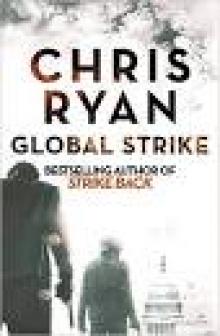 Global Strike
Global Strike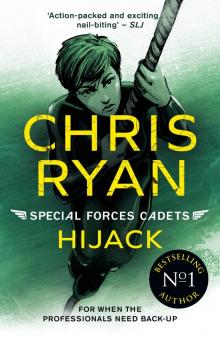 Hijack
Hijack Special Forces Cadets 2
Special Forces Cadets 2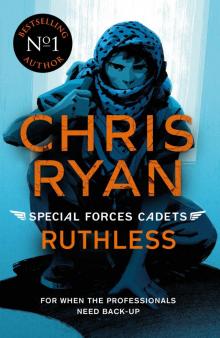 Ruthless
Ruthless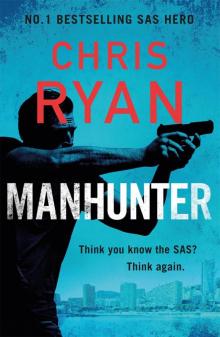 Manhunter
Manhunter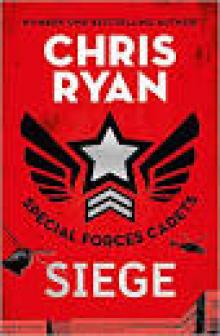 Special Forces Cadets 1
Special Forces Cadets 1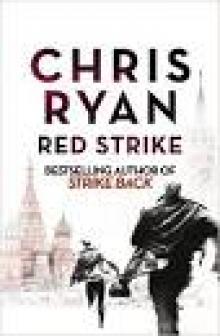 Red Strike
Red Strike Black Ops
Black Ops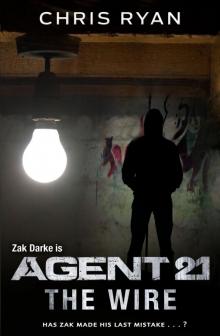 Agent 21: The Wire
Agent 21: The Wire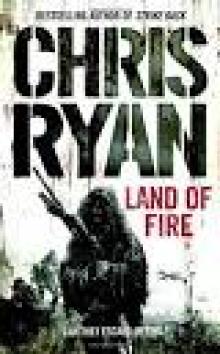 Land of Fire
Land of Fire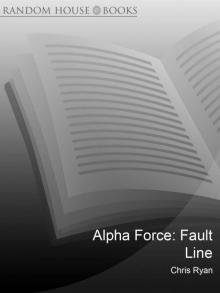 Alpha Force: Fault Line
Alpha Force: Fault Line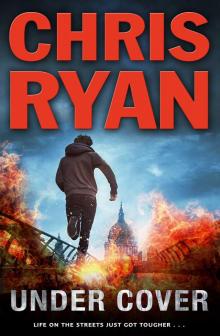 Under Cover (Agent 21)
Under Cover (Agent 21)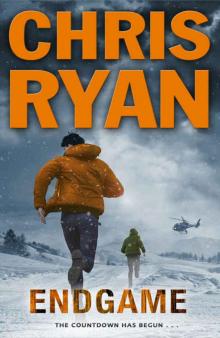 Endgame (Agent 21)
Endgame (Agent 21) Red Centre
Red Centre Blackout
Blackout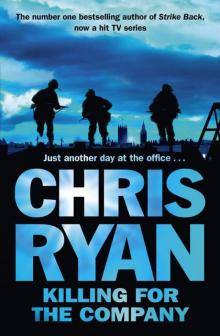 Killing for the Company
Killing for the Company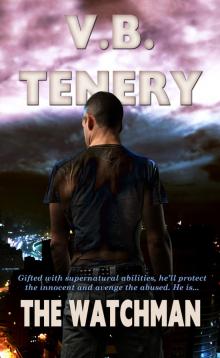 The Watchman
The Watchman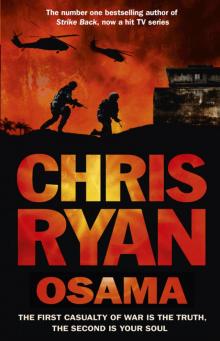 Osama
Osama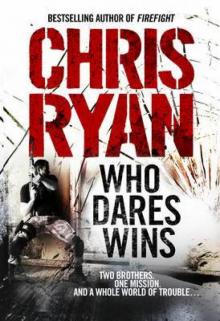 Who Dares Wins
Who Dares Wins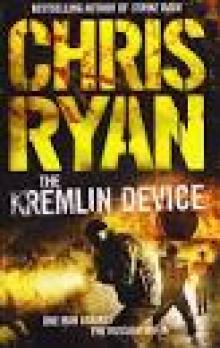 The Kremlin Device
The Kremlin Device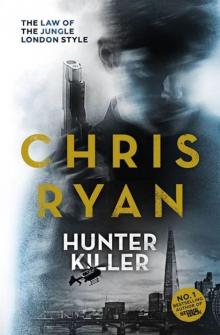 Hunter Killer
Hunter Killer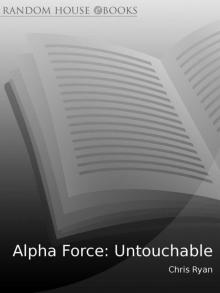 Alpha Force: Untouchable
Alpha Force: Untouchable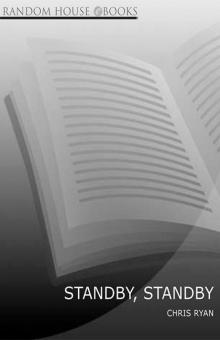 Stand By Stand By
Stand By Stand By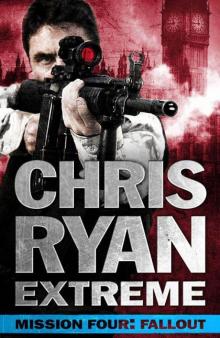 Chris Ryan Extreme: Hard Target: Mission Four: Fallout
Chris Ryan Extreme: Hard Target: Mission Four: Fallout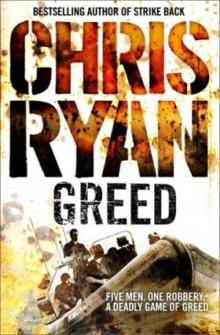 Greed mb-1
Greed mb-1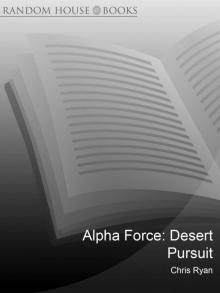 Alpha Force: Desert Pursuit
Alpha Force: Desert Pursuit Strike Back
Strike Back Greed
Greed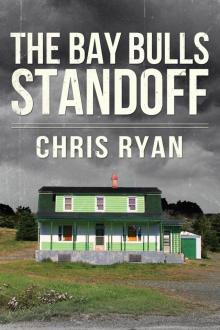 The Bay Bulls Standoff
The Bay Bulls Standoff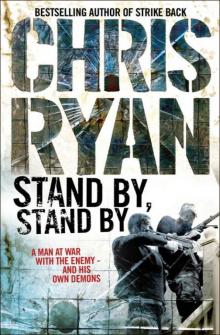 Stand By, Stand By gs-1
Stand By, Stand By gs-1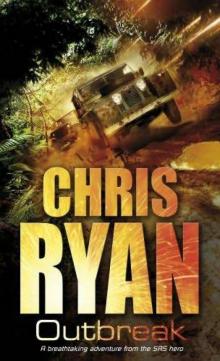 Outbreak
Outbreak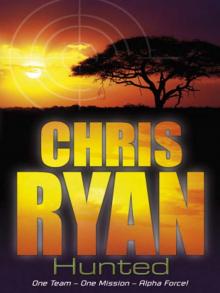 Hunted
Hunted Vortex cr-4
Vortex cr-4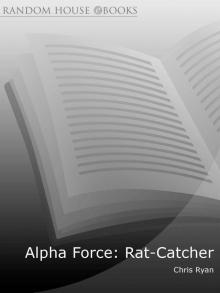 Rat-Catcher
Rat-Catcher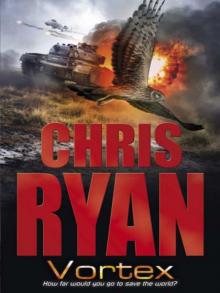 Vortex
Vortex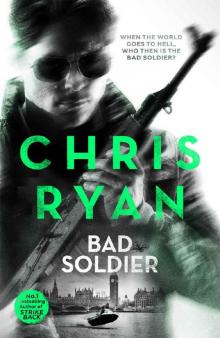 Bad Soldier
Bad Soldier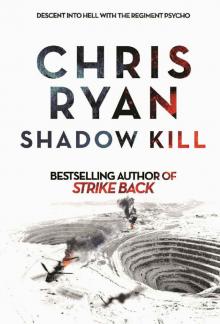 Shadow Kill: A Strikeback Novel
Shadow Kill: A Strikeback Novel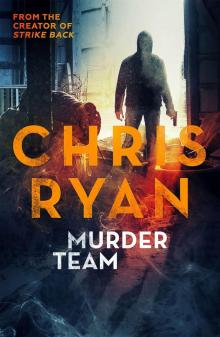 Murder Team (Kindle Single)
Murder Team (Kindle Single) One Good Turn
One Good Turn Flash Flood cr-1
Flash Flood cr-1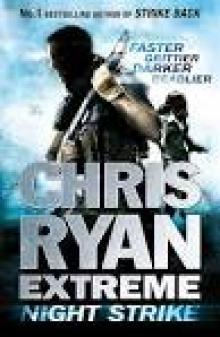 Night Strike
Night Strike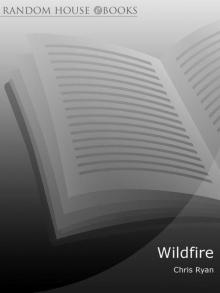 Wildfire
Wildfire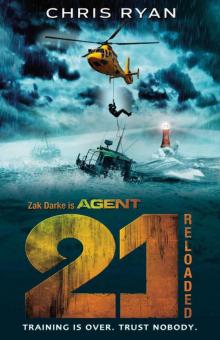 Agent 21: Reloaded: Book 2
Agent 21: Reloaded: Book 2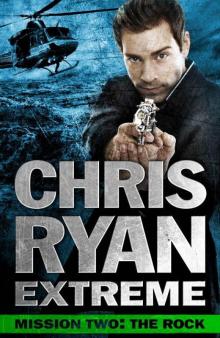 Chris Ryan Extreme: Hard Target: Mission Two: The Rock
Chris Ryan Extreme: Hard Target: Mission Two: The Rock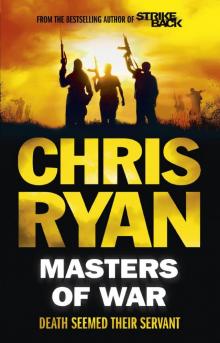 Masters of War
Masters of War Murder Team
Murder Team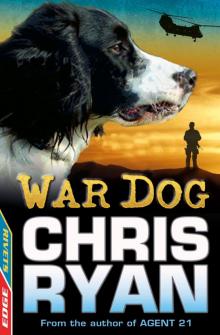 War Dog
War Dog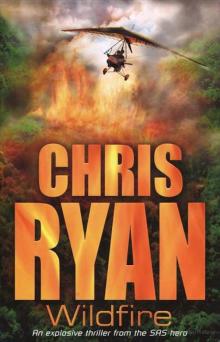 Wildfire cr-2
Wildfire cr-2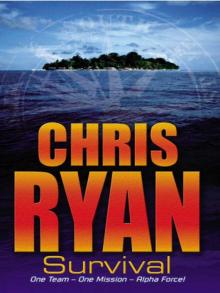 Survival
Survival The One That Got Away - Junior edition
The One That Got Away - Junior edition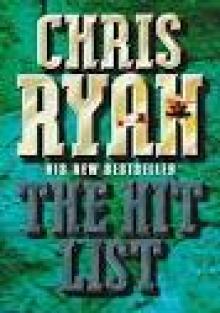 The Hit List
The Hit List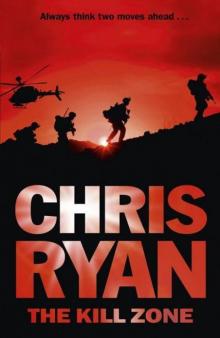 The Kill Zone
The Kill Zone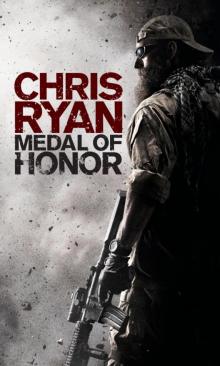 Medal of Honor
Medal of Honor Battleground
Battleground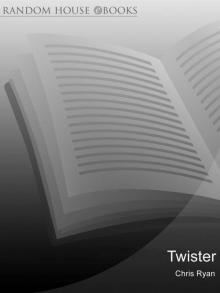 Twister
Twister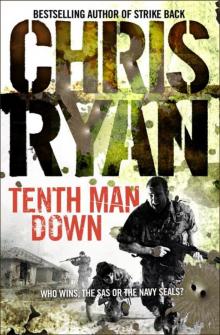 Tenth Man Down gs-4
Tenth Man Down gs-4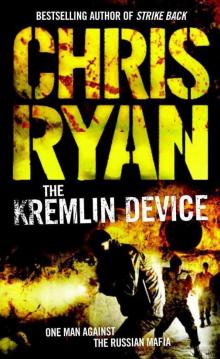 The Kremlin Device gs-3
The Kremlin Device gs-3 Hostage
Hostage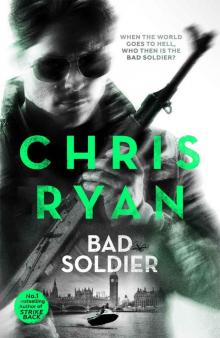 Bad Soldier: Danny Black Thriller 4
Bad Soldier: Danny Black Thriller 4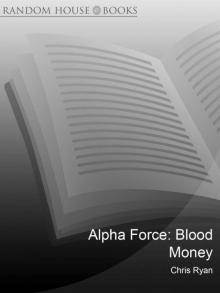 Alpha Force: Blood Money
Alpha Force: Blood Money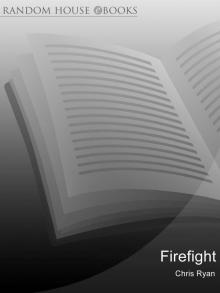 Firefight
Firefight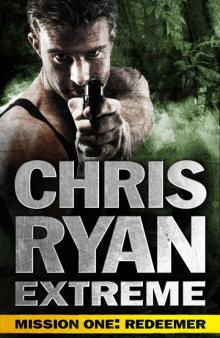 Chris Ryan Extreme: Hard Target: Mission One: Redeemer
Chris Ryan Extreme: Hard Target: Mission One: Redeemer Hit List
Hit List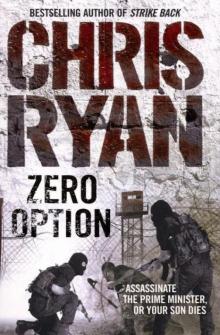 Zero Option gs-2
Zero Option gs-2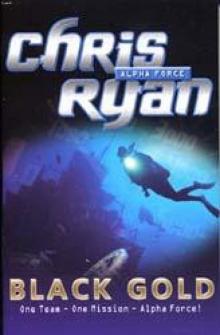 Black Gold
Black Gold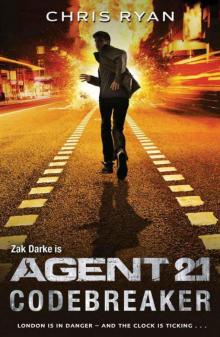 Agent 21: Codebreaker: Book 3
Agent 21: Codebreaker: Book 3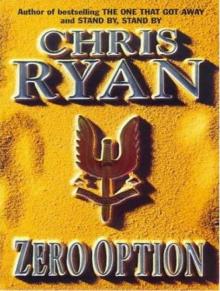 Zero Option
Zero Option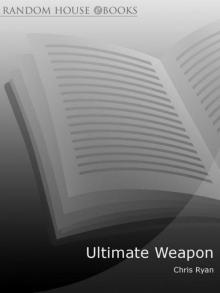 Ultimate Weapon
Ultimate Weapon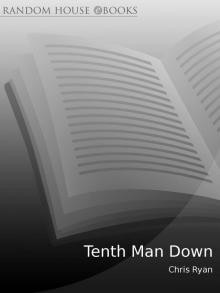 Tenth Man Down
Tenth Man Down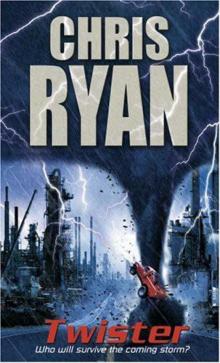 Twister cr-5
Twister cr-5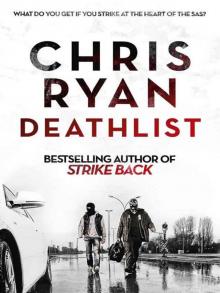 Deathlist
Deathlist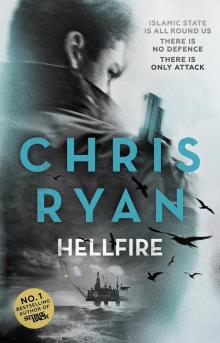 Hellfire
Hellfire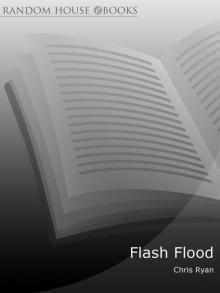 Flash Flood
Flash Flood Battleground cr-6
Battleground cr-6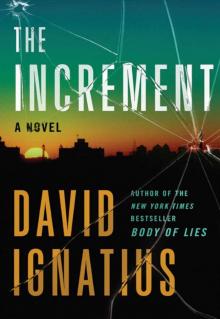 The Increment
The Increment